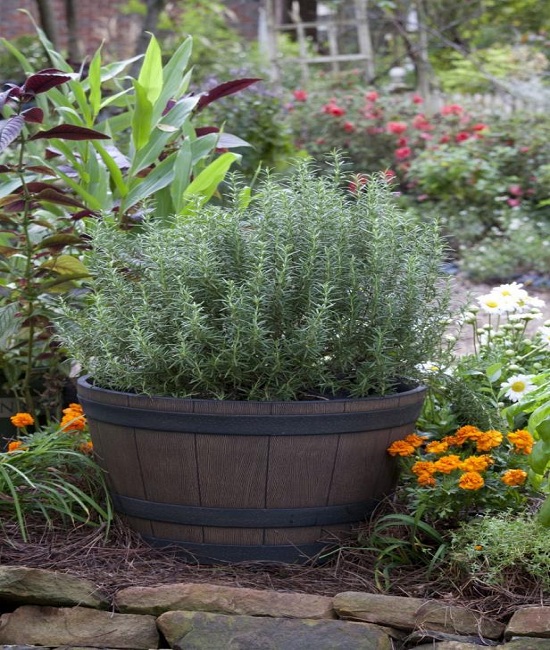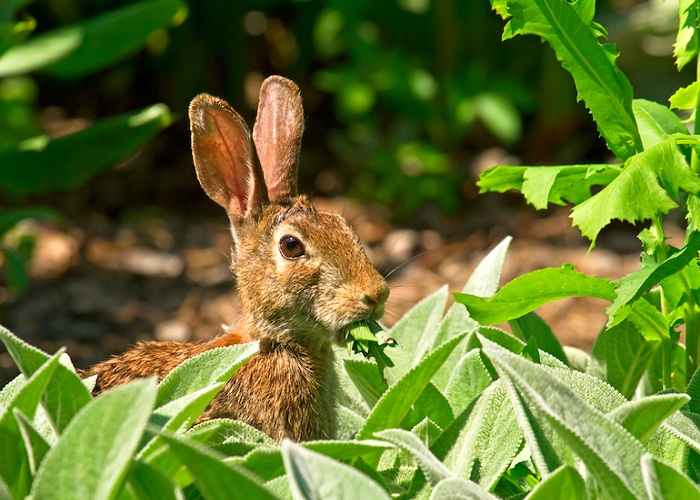Although they’re endearing to look at, rabbits can cause significant harm to a landscape. You won’t have to worry about your favorite plants having their succulent leaves nibbled on by rabbits if you grow rabbit-repellent plants. So frustrating that it makes you want to pull your hair out!
They can make short work of your flower borders or vegetable patch if they discover some tasty foliage, such as the new spring growth of annuals and perennials.
Many plants are actually repulsive or unappealing to them, so that’s a plus. If you want to keep rabbits out of your garden borders, you should grow a lot of these plants.
LAVANDULA ANGUSTIFOLIA ‘PURITY’
- Hardiness: USDA 5-8 /(UK H5)
- Height: 15 inches (40cm)
- Width of the spread: 24 inches (60cm)
- Best for: Pollinators
If rabbits are a problem where you live, there is no such thing as having too much lavender in your yard. While the ever-gray foliage and flowers that fill the air on warm days may have a delightful flavor to us, rabbits find the scent offensive.
Grow a thin hedge around your flower borders with a compact variety, such as the refined white-flowered ‘Purity,’ to deter rabbits from munching on your prized perennials. Lavender has the extra benefit of being an insect repellent, making it a highly desirable plant. Make sure the soil is very well-drained and that they get plenty of sun.
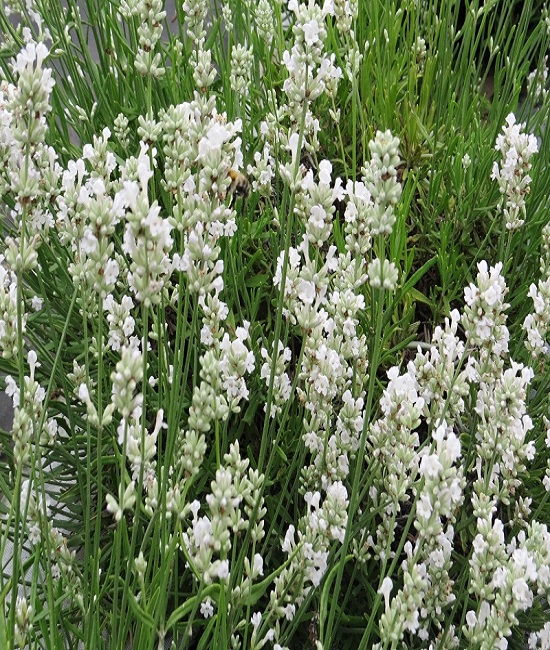
ROSA GLAUCA POURR
- Hardiness: USDA 2 to 8 /(UK H7)
- Height: 6ft (1.8m)
- Spread: 5ft (1.5m)
- Best for: Rose hips
For the same reason that you should avoid soft-foliaged cultivars if deer are a problem, you should also avoid rabbits. The thorns on a rose bush are not a tasty treat for rabbits, and they can be used to effectively protect other plants from being nibbled on.
The deep red stems and mauve-gray leaves of this species of shrub rose to provide nectar and pollen to pollinators throughout the summer.
Later in the year, a flood of red hips appears, providing food for migrating birds. You can let it go free or shape it into a hedge.
Performs best in humus-rich, well-drained, retentive soil in full sun, but can survive in partial shade and on less than ideal soil.
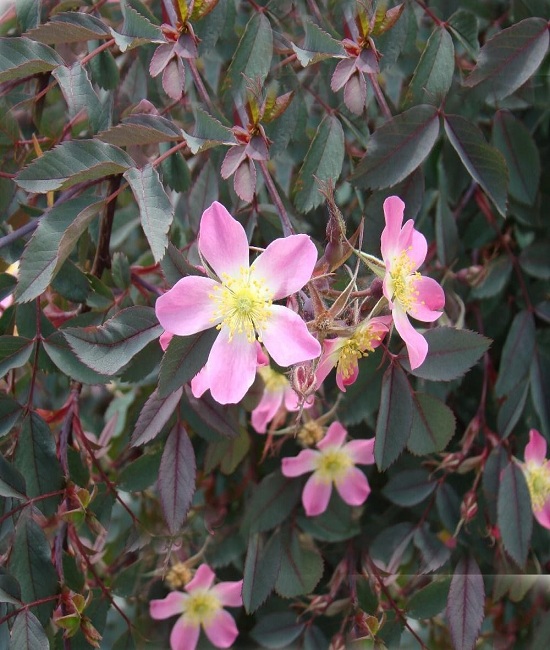
TAGETES ‘LEMON GEM’
- Hardiness: All zones
- Height: 10in (25cm)
- Spread: 10in (25cm)
- Best for: The vegetable patch
Because rabbits loathe the lovely strong smell of marigolds, these flowers make great rabbit-repellent plants. In order to protect the growth within, they are excellent as edging plants for a border or vegetable patch.
From late spring to early fall, fragrant yellow, orange, or red blossoms sit atop the leaves.
The single-flowered variants are recommended, as the double-flowered variations tend to look antiquated and don’t provide for pollinators, and can be grown from seed or purchased as bedding plants. This lovely Mexican variety, named “Lemon Gem,” blooms continuously for a few months with a riot of sunshine-hued flowers.
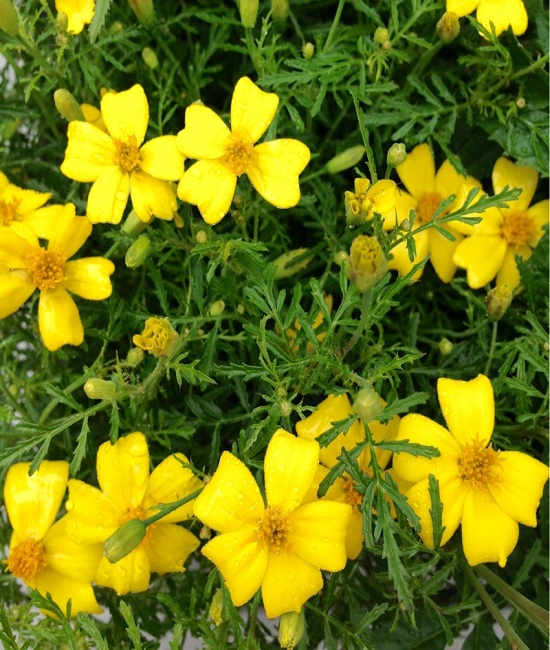
STACHYS BYZANTINA
Hardiness: USDA 4-8 (UK H7)
Height: 20in (50cm)
Spread: 20in (50cm)Best for: Texture
Lamb’s ear is one of the best plants for the front of the garden border since rabbits don’t like its hairy or downy leaf. Its ever-gray, fuzzy silver leaves are capped by silver and pink flowers in the summer, making it one of the nicest foliage plants you can buy.
The male wool carder bee, which is quite territorial, requires that female bees who visit to remove the leaf wool to line their nests must mate with him, making this an interesting wildlife plant in addition to being an excellent perennial ground cover for dry, sunny areas of the garden.
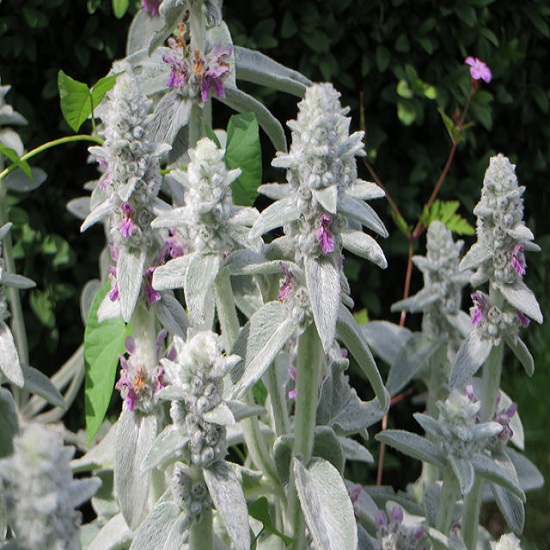
STIPA TENUISSIMA
Hardiness: USDA 7-10 (UK H4)
Height: 2ft (60cm)
Spread: 1ft (30cm)
Best for: Contemporary gardens
Stipa and miscanthus are two examples of ornamental grasses that rabbits avoid due to their coarse, wiry texture. The Mexican feather grass is an excellent evergreen option for the border because it may self-seed if given the chance.
The green-blonde plumes and tufts that resemble hair sway in the wind, producing beautiful movement and a casual, contemporary look all year long.
It enjoys poor soil, so plant it where there will be plenty of sunshine and no watering or mulching. If you want slug-proof plants, grasses are another fantastic choice.
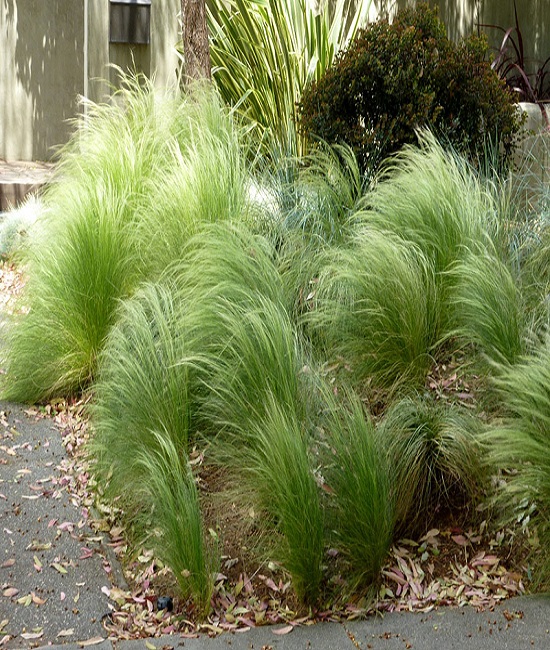
BUXUS SEMPERVIRENS ‘ELEGANTISSIMA’
- Hardiness: USDA 5-8 (UK H6)
- Height: 5ft (1.5m)
- Spread: 5ft (1.5m)
- Best for: Low hedging
Boxwoods are fantastic rabbit deterrents, but we like them for their distinctively pleasant green aroma. Most people find the odor offensive, especially when it lingers in the hot summer air. To keep rabbits out of your garden, trim it into a little hedge and place it along the boundary.
Plant the elegant variegated variety ‘Elegantissima’ in semi-shaded locations with well-drained soil. Trim in late summer on dry years, disinfect shears, snip a convex top, mulch annually, and water from underneath to keep your box from getting blight.
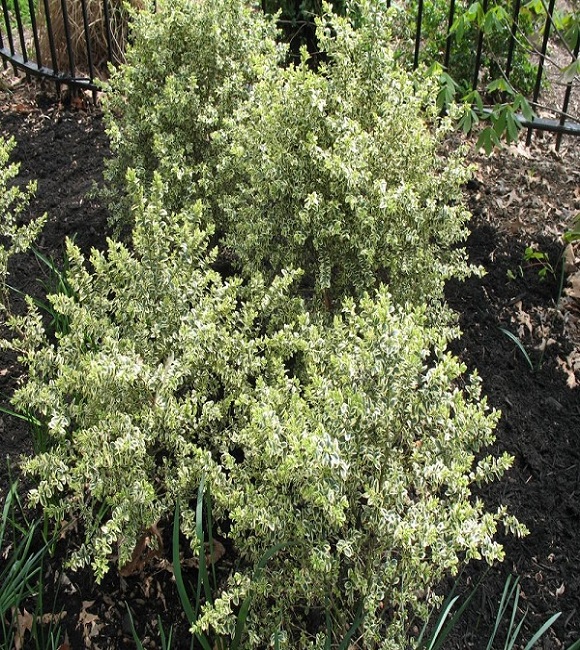
CISTUS LADANIFER L.
- Hardiness: USDA 6-9 (UK H4)
- Height: 5ft (1.5m)
- Spread: 5ft (1.5m)
- Best for: Scent
Labdanum rock-rose has a strong musk scent that is too strong for rabbits to handle, therefore they avoid eating the plant. This evergreen shrub, which is adorned with enormous, saucer-shaped, white blooms in the summer, is a wonderful addition to the back of the border, particularly in front of rabbit-hopping hedges.
Cistus species thrive on well-drained, poor (low nutrient) soil in sheltered full sun and are resistant to drought because they evolved in the wild, scrubby maquis of the Mediterranean.

NEPETA RACEMOSA ‘WALKER’S LOW’
- Hardiness: USDA 4-8 (UK H7)
- Height: 2.5ft (75cm)
- Spread: 1.6ft (50cm)
- Excellent for: Bees
The silvery green leaves of catmints have a caramel flavor that turns off rabbits. One of the best types is “Walker’s Low,” which has dark purple-blue flowers on thin, green stems.
For extra blooms in summer, trim back wasted stems as you would any other catmint. Bees love the sweet scent of catmint flowers.
Plant in a location that receives full or partial light and well-drained soil; don’t over-feed or the plant will get leggy and need staking if grown in rich soil.
ALLIUM SCHUBERTII
- Hardiness: USDA 5-8 (UK H4)
- Height: 20in (50cm)
- Spread: 12in (30cm)
- Excellent for: Flowering Seeds
The onion aroma of allium leaves is enough to deter rabbits, and the plants’ architectural flowerheads are a beautiful addition to early summer borders or can be used in winter as ornamental seedheads or in floral arrangements.
Schubert’s allium, with its pink-purple flowers and wine-colored stems, looks like exploding fireworks at the front of the border and can grow to a magnificent 12 inches (30 centimeters). Plant bulbs 6in (15cm) deep in well-drained, protected sun in fall.

PAPAVER SOMNIFERUM
- Hardiness: USDA 4-10 (UK H5)
- Height: 3ft (90cm)
- Spread: 1ft (30cm)
- Best for: Color
Since rabbits avoid opium poppies because of their toxicity, these annual blooms are perfect for use as a rabbit deterrent or to add splashes of color to otherwise bland landscapes. Above glaucous leaves, they produce plum, red, pink, and purple flowers throughout the summer.
Under ideal conditions, they will vigorously spread by self-seeding, so remove spent blooms (while protecting your hands) to prevent an overabundance in the following season. Direct spring sowing is recommended on low-nutrient, well-drained soil in full sun.
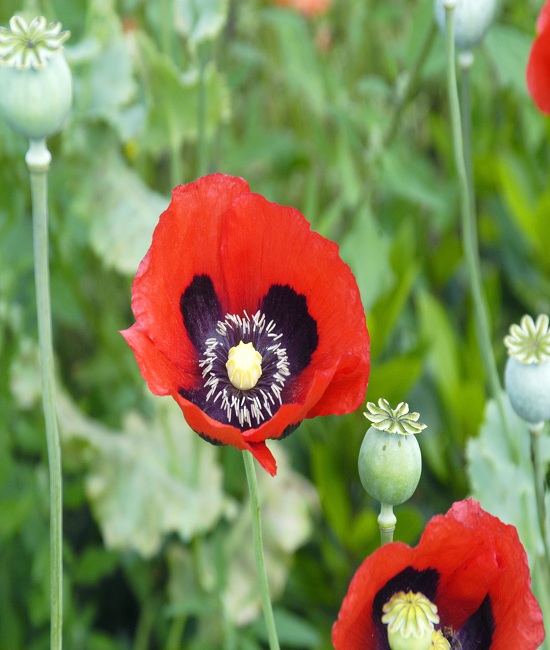
CLEOME HASSLERIANA
- Hardiness: All zones
- Height: 5ft (1.5m)
- Spread: 20in (50cm)
- Best for: Exotic flowers
When the spider flower blooms in your yard in the late summer or early fall, everyone who visits will want to know what it is. Incredible pink, mauve, and white blooms open atop spiky, erect stalks, giving the plants an appearance reminiscent of those found in the jungle.
Rabbits are the only guests that won’t enjoy this year because of the scent and thorns.
Plants with the ability to withstand the nibbling of rabbits can be grown by seeding them indoors in the late winter or early spring and bringing them into full sun in the late spring or early summer.
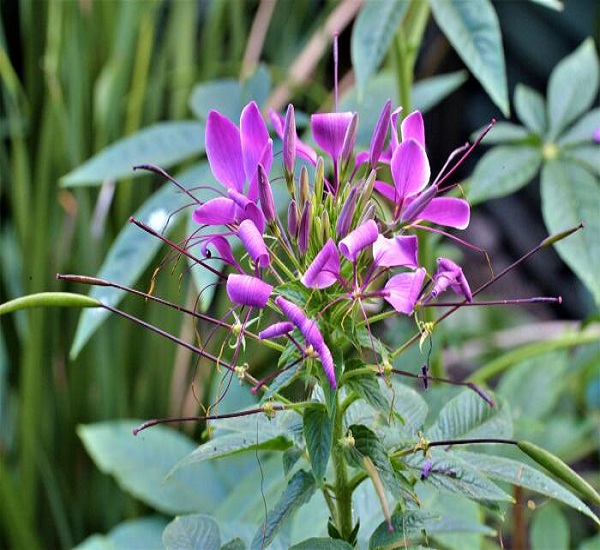
ORIGANUM LAEVIGATUM ‘HERRENHAUSEN’
- Hardiness: USDA 5-9 (UK H6)
- Height: 18in (45cm)
- Spread: 3ft (60cm)
- Best for: Butterflies
The purple and pink blossoms of this ornamental oregano attract butterflies and bees but not rabbits. Throughout the summer, these lovely flowers with claret bracts attract pollinators. Our cotton-tailed companions are scared away by the beautiful Mediterranean odour of the aromatic leaves on quiet, warm days.
The best conditions for this perennial are full sun and neutral to alkaline soil with good drainage. Useful along the border or on top of walls.
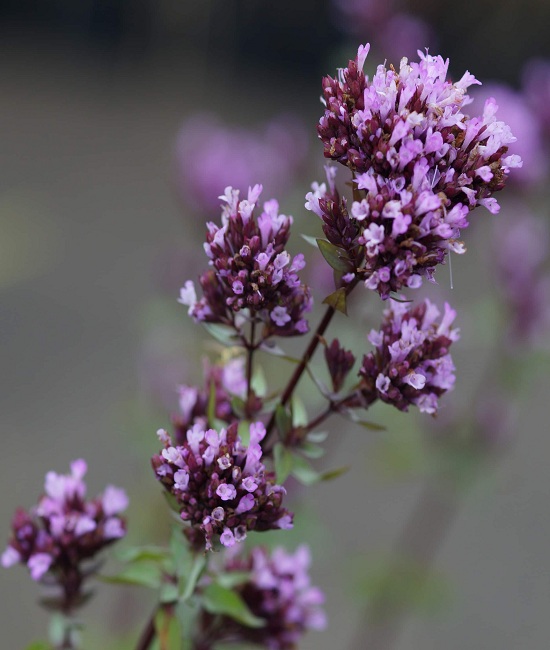
ECHINOPS BANNATICUS ‘TAPLOW BLUE’
Hardiness: USDA 3-8 (UK H7)
Height: 5ft (1.5m)
Spread: 2.5ft (75cm)
Best for: Architectural impact
Bunnies dislike the excellent border perennials known as globe thistles because of their scratchy green foliage. They are a must-have for late summer and early autumn borders in dry, sunny areas, where their beautiful silvery blue flowers attract pollinators like bees and butterflies.
After transforming into one of the greatest plants for seed-heads in late autumn, they nevertheless give architectural structure and keep things interesting for a while longer. Put in the back of the border in full sun and poor soil with good drainage.
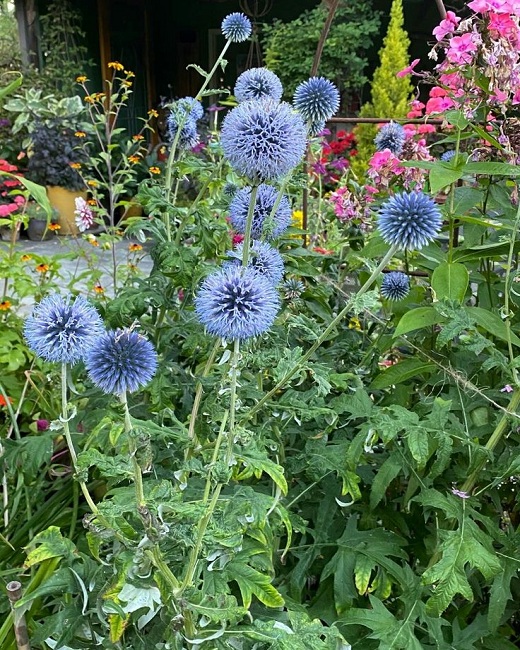
VERBENA BONARIENSIS
- Hardiness: USDA 7-11 (UK H4)
- Height: 7ft (2.1m)
- Spread: 18in (45cm)
- Best for: Flower power
Rabbits avoid this one-of-a-kind perennial because of how magnificent it is. Purple top blooms all summer and fall, covering its many slender branches with tiny amethyst flowerheads.
Positioned in the center of a border, it provides a glimpse of the plants on either side, producing a visually appealing layered effect. This biennial will self-sow in sunny locations with good drainage. To avoid skin irritation, it is best to handle it while wearing long sleeves and gloves.
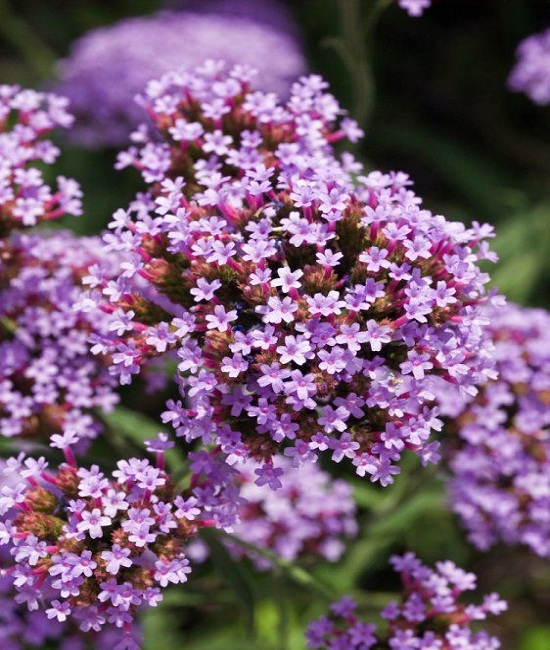
WHAT PREVENTS RABBITS FROM EATING PLANTS?
Plants that are hairy or felty (like lychnis and lamb’s ear), toxic (like foxgloves and monkshood), or prickly (like roses and globe thistle) are effective at deterring rabbits, as is coarse, thick, or wiry leaves.
Keep in mind that many plants that rabbits often ignore may be nibbled on as new growth emerges in the spring since their leaves are softer and less toxic at this time.
If rabbits are a persistent problem in your garden, the best time to install temporary barriers like fencing or wire cloches is in the spring, before the plants have had a chance to become established. In a similar vein, it’s important to keep young tree trunks from being damaged while they develop.
The best method is to take the effort to put up good wire fencing around the garden and make it hard for them to enter, but if that isn’t possible, cultivating plants they don’t like will assist. You can frighten them away by hanging CDs, tin cans, or wind chimes, all of which make noise or reflect light when the wind blows.
What odors from plants will deter rabbits?
Lavender, rosemary, nepeta, and cistus all have strong, unpleasant scents that repel rabbits. The potent odor will put them off munching on your plants’ leaves, protecting them from damage. These fragrant plants make a nice barrier at the edge of a flower bed or veggie garden.
Do coffee grounds deter rabbits?
Rabbits reportedly find coffee grounds unpleasant due to the smell and the caffeine they contain. There is anecdotal evidence that they are effective for killing slugs, but no hard data to back up this claim. But if rabbits or slugs are a problem in your garden, and you drink a lot of coffee, it could be worth a try!
